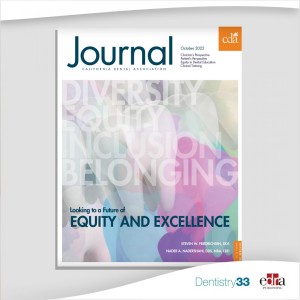
The Death Row case of Ray Krone, the beginning of the end of bite mark evidence in the U.S.
In this commentary published in May 2023 in the Journal of the California Dental Association, Alissa Bjerkhoel and the Hon. Christopher J. Plourd explore forensic odontology, which has four primary applications.
The authors write that these applications include dental identification, bite mark assessment, dental age estimation and standard of care. This article focuses on the history of forensic odontology in the U.S. as it relates to bite mark analysis. It will explore the DNA exoneration of Ray Krone who was sentenced to death for a murder he did not commit because of flawed bite mark analysis.
The use of bite marks in the U.S. has had a turbulent history dating back over 300 years. It was first used during the Salem Witch trials in 1692, but it did not gain national attention until the State of Florida prosecuted serial killer Ted Bundy, and a key element of the state’s case was bite mark analysis. The Bundy case was the seminal case for the use of bite mark evidence in American courts.
Over the next 30 years, numerous convictions based on bite marks cemented the evidence into the legal system as validated, legitimate, reliable and admissible. Ray Krone’s conviction in 1992 was one of them. This article will evaluate the history of the questions surrounding bite mark analysis and comparison culminating in the recent National Institute of Standards and Technology (NIST) report and the basis for NIST’s conclusions as well as discussing the fate of bite mark analysis as an accepted forensic science discipline.
Bjerkhoel is with the California Superior Court, California Western School of Law and a staff attorney with the California Innocence Project in San Diego. Plourd is a judge of the Imperial County Superior Court in El Centro, California.
Alissa Bjerkhoel & Hon Christopher J. Plourd (2023), "The Death Row Case of Ray Krone, the Beginning of the End of Bite Mark Evidence in the United States," Journal of the California Dental Association, 51:1, DOI: 10.1080/19424396.2023.2210330.
 Related articles
Related articles
Endodontics 20 June 2023
AI-guided algorithms have a great potential to better diagnose, treatment plan, and execute endodontic treatments, as well as outcome prediction of the various endodontic treatments. A review of...
Management of asymptomatic malposed third molars is a controversial topic. As a result, many malposed or mildly pathologic third molars are not removed.
Market 09 November 2022
CDA applauds move to pay for some dental exams, treatments
Beginning in 2023, Medicare will pay for some dental exams and treatments, including to eliminate infection preceding an organ transplant and certain cardiac...
Market 11 October 2022
Diversity, equity, inclusion highlighted in Journal of the California Dental Association
The October 2022 issue of the Journal of the California Dental Association provides a candid look at exclusion and underrepresentation in dentistry from the patient and clinician perspective.
Market 16 September 2022
CDA supports changes, while the AGD says 'no'
In June 2022, more than 100 members of the U.S. House Representatives sent a letter to the Centers for Medicare & Medicaid Services urging the use of the agency’s regulatory authority to increase...
 Read more
Read more
Editorials 10 October 2025
With proud smiles and crisp white coats, ninety-three learners from the DDS Class of 2029 and the International Dentist Pathway Class of 2028 marked the start of their dental careers at the UCSF...
Periodontology 10 October 2025
Continuous professional development (CPD) in Periodontology refers to the overall framework of opportunities that facilitate a life-long learning practice, driven by the learner-practitioner and...
TheraBreath, the #1 alcohol-free mouthwash brand in the U.S.*, has introduced a new line of dentist-formulated, clinically tested toothpastes designed to support professional oral care...
News 10 October 2025
New officers and trustees were installed at the Minnesota Dental Association’s Leadership Conference on September 19 in Minneapolis.
News 10 October 2025
Smartee Denti-Technology today announced that Professor Gang Shen, its Chief Scientist and Executive President of TaiKang ByBo Dental, has once again been named to the World’s Top 2% Scientists...















